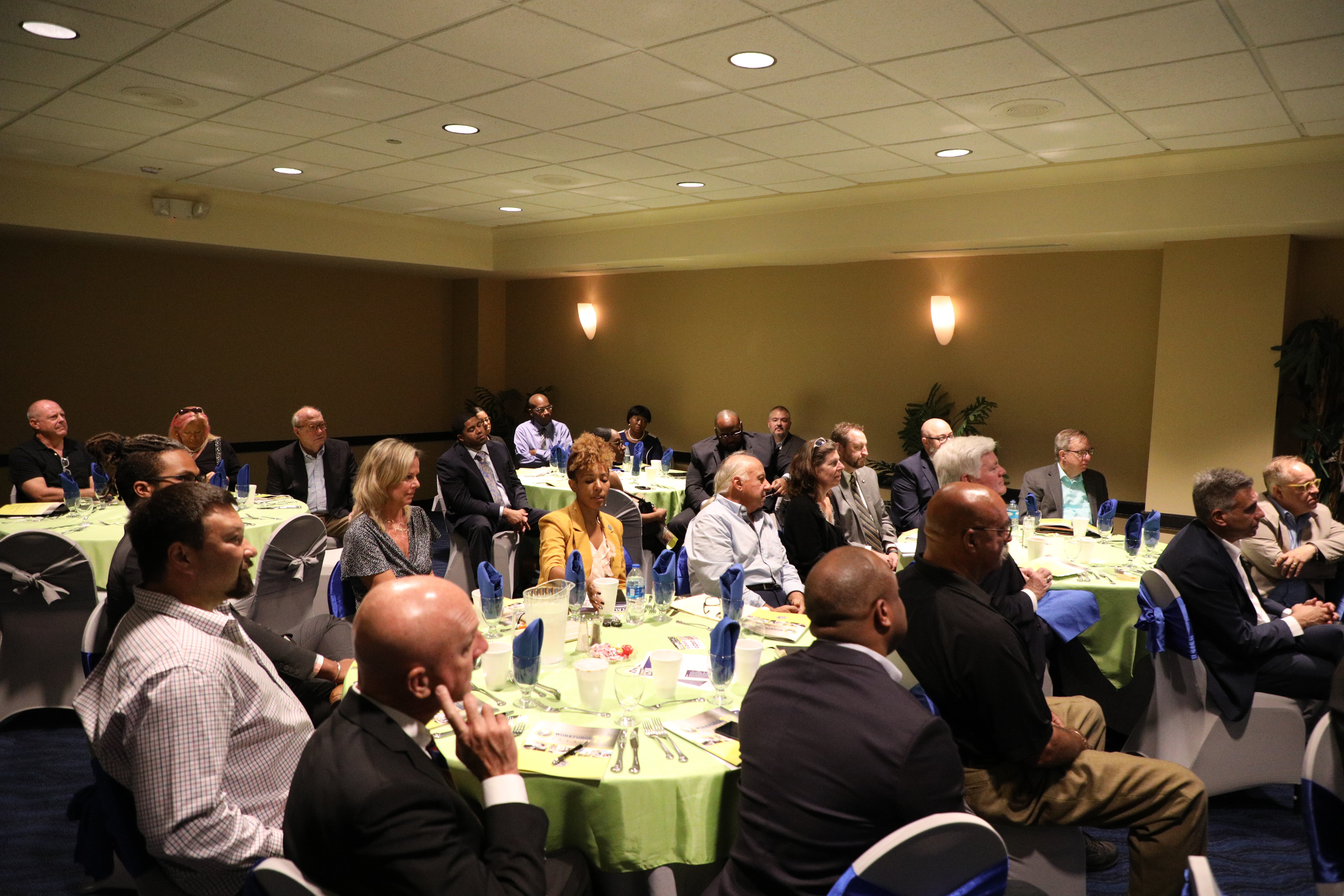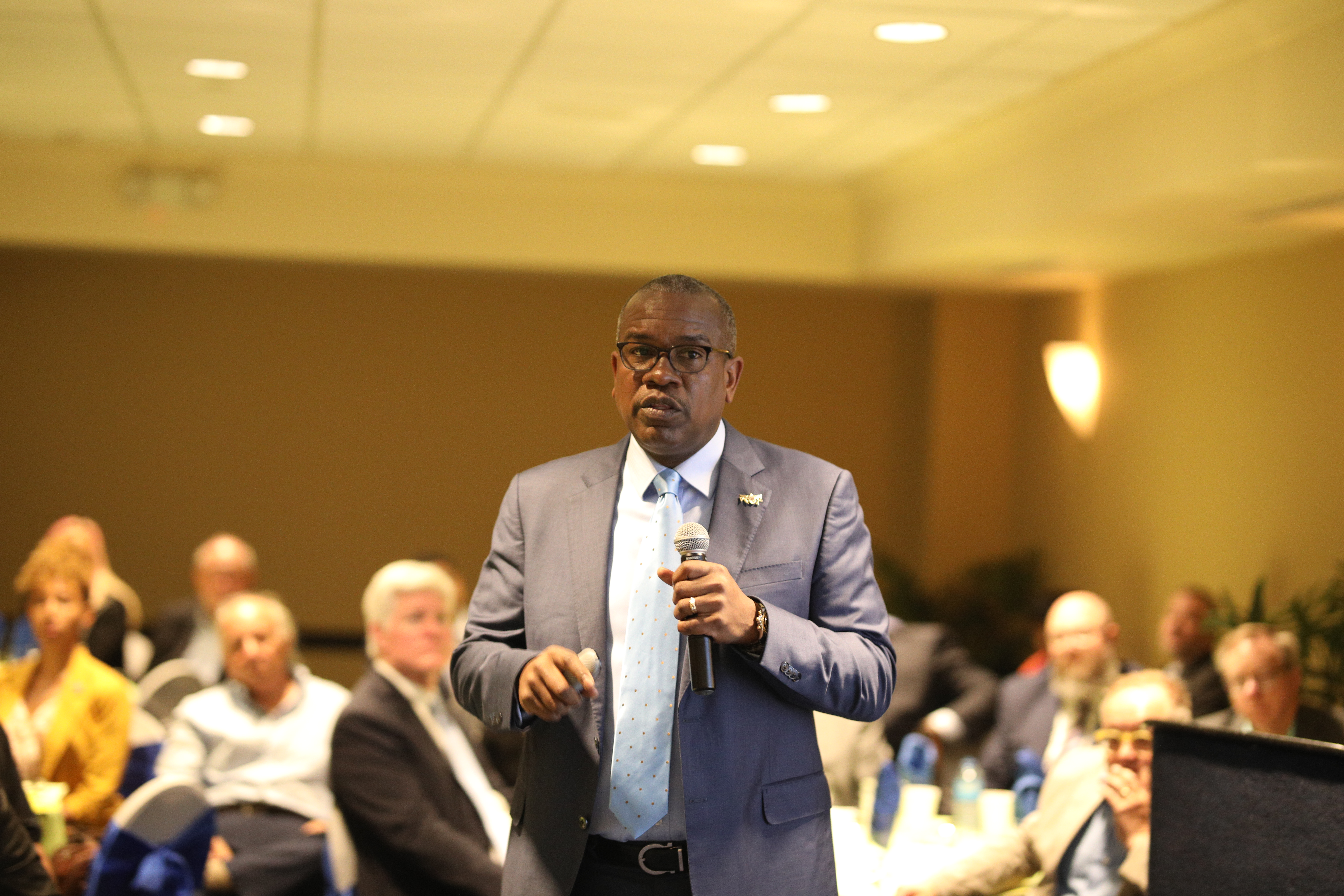U.S. VIRGIN ISLANDS—During two daylong Workforce Development Summits that Governor Albert Bryan Jr. initiated in both districts, he laid out a clear path for how he plans to stabilize the Territory’s economy and create a sustainable and thriving workforce that will benefit all Virgin Islanders.
“This summit will highlight how workforce development has to evolve from a problem-focused approach, from simply addressing issues of low-skilled workers or the need for more employees in a particular industry,” V.I. Labor Commissioner Gary Molloy said to open the first summit meeting on Tuesday on St. Thomas.
“The short version is, businesses want good people, talented people. Education wants to connect them together,” Commissioner Molloy said. “However, our labor market data is showing that there is a language barrier between people, education and the world of work.”
Both meetings were well-attended by a variety of business leaders and members of the nonprofit sector from both districts.
Governor Bryan’s approach to a sustainable and robust workforce – which he calls “Cradle to Careers” – is a plan that he said he has developed over the last 12 years. To that end, he announced that he is asking for the V.I. Legislature’s assistance to rename the Virgin Islands Department of Labor to the Department of Workforce Development and Security.
“When you get a job, your whole future changes. When you get that job you’ve always been looking for, it just changes everything,” the Governor said. “You have income coming into the family. You get a sense of purpose. You’re able to create yourself, buy a home, get a new car, move to a different economic level. You connect. You’re a part of society. You belong to something.”
“Developing a workforce is one of the most important things that we want to do,” he said.
The Governor’s plan to develop a strident and lasting workforce comprises a number of elements, including:
• Bolstering the education system through investing in early childhood education; investing in university programs aligned with the Territory’s growth sectors and creating charter programs for gifted students.
• Reducing single female households by 30 percent and increasing household income to 10 percent above the national average.
• Strengthening access infrastructure through low-cost wireless broadband, maximizing public computer centers’ transitioning students to eLearning and providing every student with internet access and a device to use it.
“Workforce development is the biggest part of economic development,” Governor Bryan said. “For years we’ve been building things and thinking that’s economic development. Unless you move people from one economic sector into another economic sector, you’re not really doing economic development.”
Some of the immediate steps the Governor proposes to increase the workforce economy include:
• Building a financial sector with a UVI School of Business.
• Taking advantage of the RT Park, which houses Google 2020 and has some of the best programmers available.
• Creating an active cargo shipping hub to give rise to new businesses on St. Croix.
• Expanding refinery operations.
• Upgrading transshipment capabilities for containers.
• Diversifying the tourism base to 20 percent Asian visitors, 30 percent European visitors and 50 percent American visitors.

Governor Bryan also identified a number of hurdles facing the Territory’s efforts to grow its workforce:
• The price of energy
• Labor force availability
• Availability of capital
• Increasing local investing
• Building the Territory’s status and representation and how it is affected by federal legislation
“There is no separation about workforce development. From cradle to grave, there is no separation,” Governor Bryan said. “Education has got to stop seeing itself as K-12. It has to start seeing itself as part of a workforce development system that includes post-secondary.”
“We’re still operating like we’re in 1965. It’s 2020,” the Governor said. “Everything that’s in government must be powered by technology. We must lead the way in technology. By the time I leave this office, you should be able to do every single government service from your smartphone. That’s where we need to be.”

